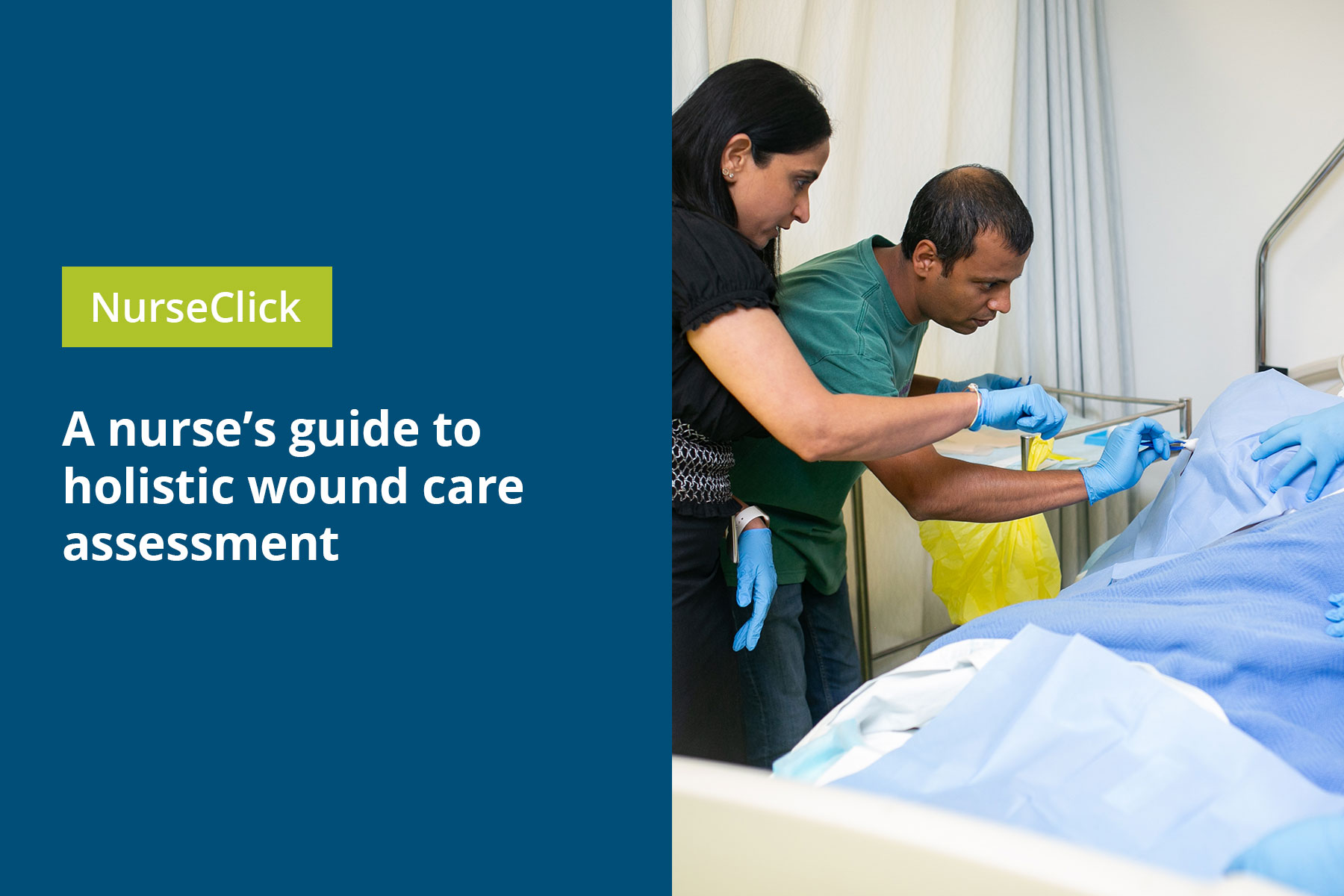Wounds have become a significant public health challenge, consuming a large amount of healthcare resources (Wounds Australia, 2022). They can severely affect people’s quality of life, causing psychological and social distress (Eriksson et al., 2022; Falcone et al., 2021), and may lead to significant periods of lost employment, resulting in financial loss (McCosker et al., 2019).
Many traditional practices relating to wounds have not been based on robust scientific evidence. Every nurse needs to be able to question and challenge wound care practices that are no longer supported by evidence. This can only be achieved if practitioners are well-informed and able to provide the relevant evidence required to support change. The informed wound practitioner’s role is to act as an agent of change.
For nurses to manage wounds effectively, they need to be competent in undertaking holistic and comprehensive wound assessments. This process must incorporate the wound and the person’s medical and social history. A thorough assessment informs decision-making and guides person-centred goal planning.
A holistic approach requires the nurse to consider the cultural, psychological, and socioeconomic aspects of health as well as the physical aspects. Comprehensive history-taking, providing person-centred care, thoroughly examining the wound, initiating appropriate and timely management, follow-up, and investigation are all essential aspects of the nurse’s role in wound care.
Multiple factors can influence the healing process and must be considered in any wound assessment. These factors may be intrinsic, such as age, obesity, oxygen and blood supply (vascular insufficiency), nutritional status, medications, and underlying pathology such as the presence of diabetes or kidney disease (Carville, 2023). Extrinsic factors include mechanical stress, such as shearing, friction, and pressure, and lifestyle factors such as stress, smoking, and alcohol intake (Carville, 2023).
All intrinsic and extrinsic factors need to be identified and appropriately managed for wounds to heal. This is where excellent assessment skills come into play. Wound assessment involves noting identifiable characteristics of a wound to plan treatment strategies and evaluate wound progression. Characteristics that should be identified include the type of wound, measurement of the wound size, tissue type, the amount and type of exudate, and the condition of the surrounding tissue and presence of infection.
Holistic wound assessment checklist
Elevate your wound management skills
Nurses working across many practice settings will encounter wounds and are in a pivotal position to provide effective wound management. Whether in hospitals, clinics, home care, or community health settings, nurses are often the first to assess and treat wounds, making their role crucial in promoting optimal healing and preventing complications. In many settings, wound care has become the primary responsibility of nurses, and doctors frequently seek guidance from nurses regarding the best practices in wound management. Hence, it’s essential that all nurses are skilled in conducting holistic wound assessments and are well-versed in the latest best practices.
Units such as ACN’s Wound Management Update CPD course provide nurses with the opportunity to gain knowledge and skills in evidence-based wound management. This face-to-face course offers hands-on experience and training provided for nurses by nurses, ensuring that participants receive practical, relevant training to implement in their day-to-day practice. For those who want to further specialise in this area, ACN’s Wound Management Single Unit of Study offers an opportunity to deepen their expertise and work towards a Graduate Certificate. Additionally, for those looking for a quick refresher, ACN provides short online CPD courses, including free options for ACN members.
Author: Elizabeth Moran, RN, MEd, Cert IV TAE, MACN
Liz Moran is a nurse educator at the Australian College of Nursing and coordinates the Graduate Certificate in Stomal Therapy Nursing. Liz also contributes to educational delivery across all ACN’s divisions.
Liz has a Master’s degree in Education (health science) obtained in 2011 from the University of Sydney. She is a member of the Australian Nurse Teachers Society and the Diagnostics and Interventional Cardiology Nurses Group. Liz undertook her nurse training in the United Kingdom where she worked in critical care areas. Liz has over 30 years of extensive clinical experience in both public and private health settings as well as remote area nursing in the Kimberly, WA. She has also worked in the field of research at St Vincent’s Centre for Applied Medical Research.
Currently, she combines her two loves of nursing and education in the role of nurse educator with particular interests in evidence-based practice, reflective practice and creating exceptional educational experiences. She believes that education is foundational in advancing nursing leadership.

References
Carville, K. (2023). Wound care manual (8th ed.). Silver Chain Foundation.
Eriksson, E., Liu, P. Y., Schultz, G. S., Martins‐Green, M. M., Tanaka, R., Weir, D., Gould, L. J., Armstrong, D. G., Gibbons, G. W., Wolcott, R., Olutoye, O. O., Kirsner, R. S., & Gurtner, G. C. (2022). Chronic wounds: Treatment consensus. Wound Repair and Regeneration, 30(2), 156–171. https://doi.org/10.1111/wrr.12994
Falcone, M., De Angelis, B., Pea, F., Scalise, A., Stefani, S., Tasinato, R., Zanetti, O., & Dalla Paola, L. (2021). Challenges in the management of chronic wound infections. Journal of Global Antimicrobial Resistance, 26, 140–147. https://doi.org/10.1016/j.jgar.2021.05.010
McCosker, L., Tulleners, R., Cheng, Q., Rohmer, S., Pacella, T., Graves, N., & Pacella, R. (2019). Chronic wounds in Australia: A systematic review of key epidemiological and clinical parameters. International Wound Journal, 16(1), 84–95. https://www.ncbi.nlm.nih.gov/pmc/articles/PMC7948920/
Wounds Australia. (2022). Pre-budget submission to fight Australia’s chronic wound epidemic. https://treasury.gov.au/sites/default/files/2022-03/258735_wounds_australia.pdf





